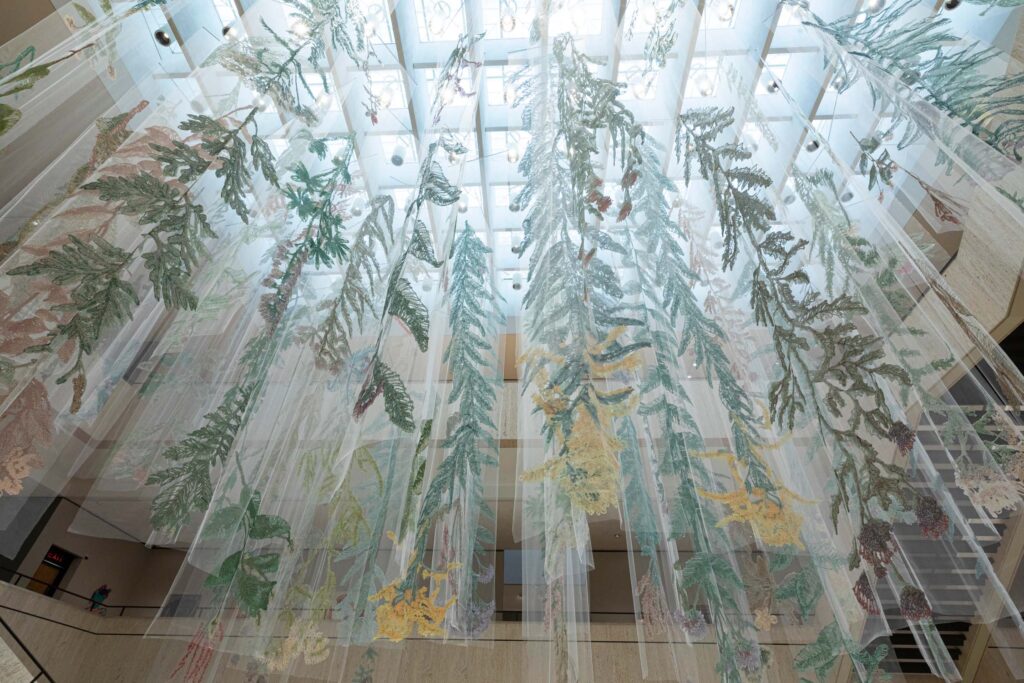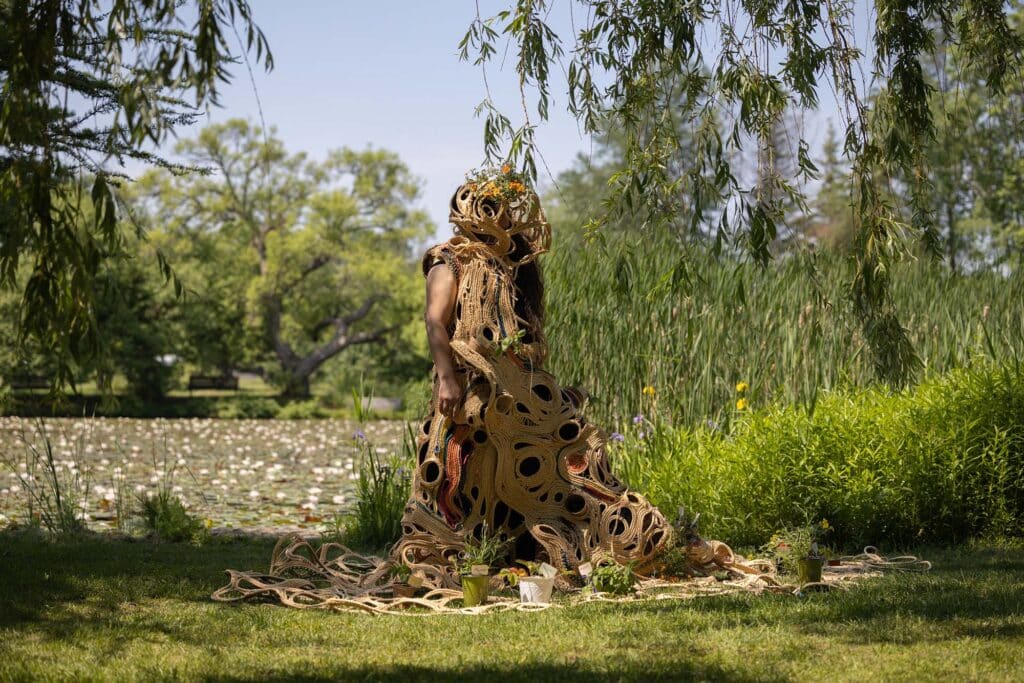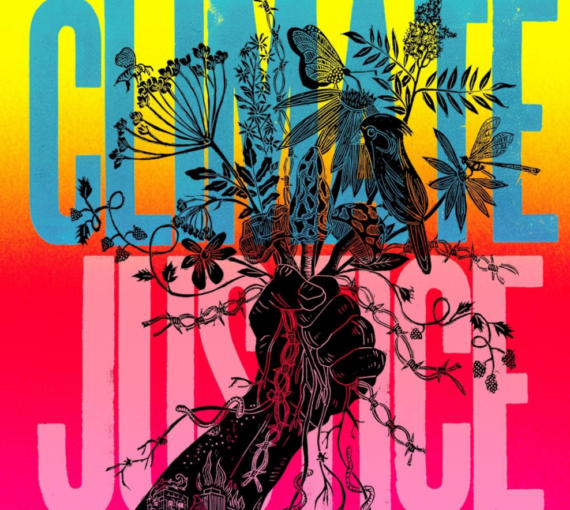
Ode to a Prairie by Rewilding Arts Prize winner Amanda McCavour
The movement for a wilder world needs everyone on board. These artists and Rewilding Arts Prize winners are among those leading the way.
Picture the moment that got you interested in rewilding. Was it a pollinator garden you passed on your way to work? All the talk about beavers saving us from drought and floods? David Attenborough on your TV screen, telling you that we need to rewild the world — and that the time to do so is right now?
Or perhaps it’s better to take a step back, to the moments in life that triggered — or deepened — your connection with nature. For many of us, pandemic lockdowns were a time to pause, look around and get to know the plants and animals near our homes. For others, those moments might have happened farther afield or far earlier: during a relaxing vacation to a nature reserve, or while growing up in a family or culture that has always considered humans and wilderness to be united, not separate.
In a time of simultaneous climate and biodiversity crises (not to mention everything else that’s going on), it’s clear we need to find better ways to run the world — or simply to run it less. Rewilding in its many manifestations is one of the solutions: not just to the physical challenges facing nature, but to the existential ones facing humankind. Participating in rewilding projects can help us restore hope, find purpose and make positive change. But how do we spread the word, break out of our bubbles and invite more people to join us?

Community Garden by Khadija Baker, a project supported by the Canada Council for the Arts.
It’s this challenge that Jode Roberts had in mind when he first met mural artist Nick Sweetman. Roberts works for the David Suzuki Foundation on projects under the Rewilding Communities umbrella, and it was six or seven years ago that he and Sweetman worked on their first joint endeavour, a street art project in Toronto to raise awareness of the city’s bees and butterflies.
“That project led to others and to conversations about how we can thread art into the work that we’re doing,” Roberts says. “Not as an afterthought, not as someone creating a poster for an event. But figuring out what artists are doing and how they’re grappling with a lot of the same issues and have a lot of the same values as us. And presenting those in places that I never see.”

Post-Anthropocene Architecture Sketch #020: Waypoint by Rewilding Arts Prize winner Justin Tyler Tate.
That’s where the seeds for the Rewilding Arts Prize were planted. The goal: to find artists in Canada whose work brings alive issues of rewilding in our lives and communities, and to support and promote their work as much as possible. Roberts put together a stellar jury: Sweetman; visual artist, author and advocate Christi Belcourt; printmaker and illustrator Edward Fu-Chen Juan; visual artist and educator Charmaine Lurch; and visual journalist and author Sarah Lazarovic. We put out a call for submissions in fall 2022 and began publishing profiles of jury members to help get the word out.
It would be an understatement to say we were overwhelmed with the response. Hundreds of artists representing diverse communities, locales and art forms heard the call and sent in their work. The jurors’ task was far from easy, not least because of the quality of the submissions. “There was so much good art,” Lazarovic says. “Sometimes I had to look away, take a breath or a walk, such was the intensity of the creativity, thoughtfulness, greenery and wildness on display.”
For Juan, one thing that stood out was that all the entrants were sending in current or past work — there was not enough lead time to create anything new. That just goes to show how many artists have the human-nature relationship on their radars, he says. “I thought that was fantastic, and inspiring. It made me want to collaborate with other artists and is making me think about how I should approach rewilding in my next project.” Juan now has a cross-Canada art-viewing road trip on his dream travel list. “I would love to see these works in person.”
While the original intention was simply to award five prizes, jurors found it so hard to narrow down the field that they ended up selecting six winners, plus seven runners-up. The winners are:
• Multidisciplinary artist Khadija Baker
• Lichenologist and artist Natasha Lavdovsky
• Textile artist Amanda McCavour
• Anishinaabe artist Amber Sandy
• Architectural artist Justin Tyler Tate
• Theatrical group The Only Animal
Runners-up include Anna Binta Diallo, Laara Cerman, Janice Wright Cheney, Hashveenah Manoharan, Angela Marsh, Sarah Peebles and Cole Swanson.

"Moss Chair" by Rewilding Arts Prize winner Natasha Lavdovsky.
The Rewilding Arts Prize was a bit of an experiment for Roberts and the David Suzuki Foundation, and going through the process has revealed the depth and breadth of rewilding-adjacent talent in the Canadian art world. He’s now in a reflection phase, brainstorming ways to evolve this project from a prize into something more profound and influential.
“I wonder if there’s the potential for a group like the David Suzuki Foundation to help to cross-pollinate some of these people that might not be aware that others are doing the same sort of art or art in a similar way,” he says with a very on-point metaphor. As for more immediate effects of working on the prize, he adds, “The number of people I follow on Instagram has grown dramatically.”
In the meantime, we’ll be taking the time to look closer at the artists who so impressed the jurors as we publish profiles of the six winners in the coming weeks. We’ll also be thinking of more ways to showcase these kinds of artworks and artists alongside the scientists, community organizers, gardeners and activists we feature regularly — because artists are a critical piece of this movement.
Juror Christi Belcourt sums it up best. “It was exciting to see how artists are interpreting the theme of rewilding and how their love for the earth is expressed through their art practice,” she says. “Now, more than ever, we need the power of art to move people to start taking action and better care of the world around us.”
Rewilding Magazine is an independent publication dedicated to exploring the people, places, ideas and debates connected to the global rewilding movement. We are a resource for those seeking inspiration on how to improve the human relationship with the natural world, and a community for those who want to make the planet a better place for all.


